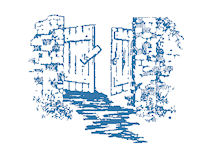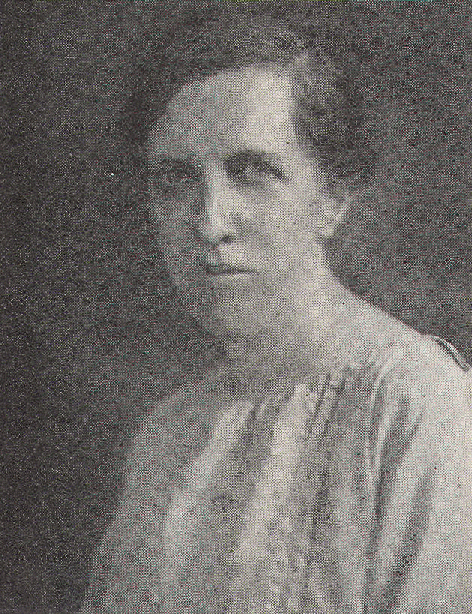


|

|

| Level* | |||
|---|---|---|---|
| 1907 | Fairy Tales, Volume I | 1 | Literature / Fairy Tales |
| 1910 | Page, Esquire, and Knight | 2 | History, World / History / Cultural |
| 1911 | Barbarian and Noble | 2 | History, World / History / Cultural |
| 1911 | Patriots and Tyrants | 2 | History, World / History / Cultural |
Autobiographical sketch from the Junior Book of Authors, 1935; courtesy of the H.W. Wilson Company
Once upon a time a little girl watched her mother take in big envelopes in the morning mail and was told that she must not disturb her until she had read her proof. She sat down with her playthings and prepared to keep very still. But soon her mother, without looking up, tossed in her direction a long piece of paper. The little girl picked it up. She would play at "reading proof." She found she could do more than play at it. There were big letters on those pages the names of which she knew. Then she saw a word she thought she knew. She tiptoed over to the bookcase and pulled out her favorite picture book. Under the picture of a dog was a word of three letters. She put her finger on it and carried it back to her chair. Then she hunted down the long page of proof till she found—yes!—those very same letters. That was the name of the picture. It must be the word "dog."
When the proof was read, she showed her mother what she had found. "Yes," said her mother. "That is the word 'dog.'" After that her mother, who was Jenny Stickney Lansing, always threw the second set of proofs of the Primer and First Reader she was making on the floor, and the little girl picked them up and hunted for words that she knew by sight in her picture book. Before the books were done, she had learned to read.
Then one day the little girl, who was Marion Lansing, went with her mother into Boston to see Mr. Ginn, who was publishing these Stickney Readers. He took her on his knee and said to her, "Will you make books for me when you grow up?" And she answered, as any five-year-old would, "Yes." But the best part of that story for the girl, who was myself, was that she did.
From Waverley, Massachusetts, where I was born on June 10, 1883, we moved to Cambridge, where I have lived ever since. From the Cambridge Latin School I went to Mount Holyoke College, up in the New England hills, and then studied a year at Radcliffe, which is next door to Harvard. In the Harvard Library is one of the finest collections of fairy and folk stories in the world. Here I found old stories which had been told and retold by so many story-tellers that their original flavor had been almost lost. I went back to these first versions and picked out the tales I liked best, both familiar and unfamiliar ones, and took them in, book by book, to Ginn and Company, who published between 1905 and 1910 the seven volumes of "The Open Road Library," beginning with Rhymes and Stories and Fairy Tales (in two volumes); then Tales of Old England and Quaint Old Stories to Read and Act; and ending with Life in the Greenwood and Page, Esquire, and Knight. Those little red books have been used in schools and libraries ever since.
The chivalry book was my favorite because I was then a "queen" in the "Knights of King Arthur," that national boys' organization of which we have the oldest living "castle" in Cambridge. There we all talked in the language of that early time. So when years later I got interested in Roger Bacon and other alchemists of the thirteenth century, who thought that at any minute they might find out how to turn lead into gold (as our scientists of today still hope to do) I knew just how my hero in Magic Gold, Roger Haddon, a boy of twelve living in a castle, would think and talk and how he would be torn between the desire to be a knight and the urge to become an alchemist. Magic Gold tells how he decided.
In 1912 I began to be an editor, getting other people to write for a library for boys and girls called "Our Wonder World" which came out in 1914 in ten big volumes with fine pictures on every page. It told about everything young people are interested in, from games and handicraft and camping to animals and electricity and radio and volcanoes and hundreds of other scientific subjects, with travel and adventure and literature and art and biography sprinkled in. For many years it was my pleasant duty to keep that set up to date for its publisher, and with all the changes that happened in the world in the years between 1914 and 1932, when we got out a revised and remade “New Wonder World,” you may believe I was busy. But all the time there was writing of my own.
History as it related to our own times interested me most. I had spent a year between high school and college traveling abroad. The books that came out from 1927 to 1932 for older boys and girls were Great Moments in Science, Great Moments in Exploration, and Great Moments in Freedom. Later there was a younger storybook, Man’s Long Climb.
Those are the books you will find on library shelves if you hunt under my name, but by the time you read this book there may be another one (for older girls) and others are on the way.
| LEVEL | AGE RANGE |
| 0 | Kindergarten |
| 1 | Grades 1 to 3 |
| 2 | Grades 4 to 6 |
| 3 | Grades 7-9 |
| 4 | Grades 10-12 |
| Copyright (c) 2005 - 2023 Yesterday's Classics, LLC. All Rights Reserved. |